
Date: November 17, 2019
Location: Lat: 24.36625°, Long: -80.710167°
Dive Depth Range: 347 - 404 meters (1,138 - 1,325 feet)
Access Dive Summary and ROV Data
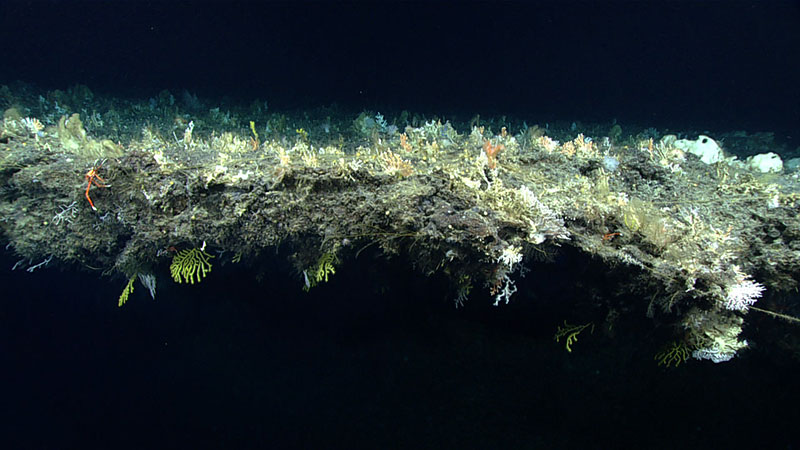
The overhangs visited during Dive 10 of the 2019 Southeastern U.S. Deep-sea Exploration were covered with life, both on top and underneath. Image courtesy of the NOAA Office of Ocean Exploration and Research, 2019 Southeastern U.S. Deep-sea Exploration. Download larger version (jpg, 904 KB).
Today’s dive was on the Pourtalès Terrace, about 51 kilometers (32 miles) south of the Florida Keys. We explored both inside and outside the Pourtalès Terrace Deepwater Coral Habitat Area of Particular Concern (HAPC). Due to the likelihood of finding suitable habitat for deep-sea corals and sponges and the importance of the site to regional managers, we planned in advance to extend the dive by two hours, and it was worth it!
At the base of the slope, we observed dense coral rubble with little to no sediments and some areas of exposed hardbottom. As we moved up the slope, we encountered large limestone slabs and boulders that appeared to be cascading down from the rim of the feature. The majority of these slabs were encrusted with phosphorite or ferromanganese. During this portion of the dive we saw squid, blackbelly rosefish, sharks, codlings, swallowtail bass, crinoids, sea urchins, brittle stars, sea stars, black coral, lace coral, and some sponges.
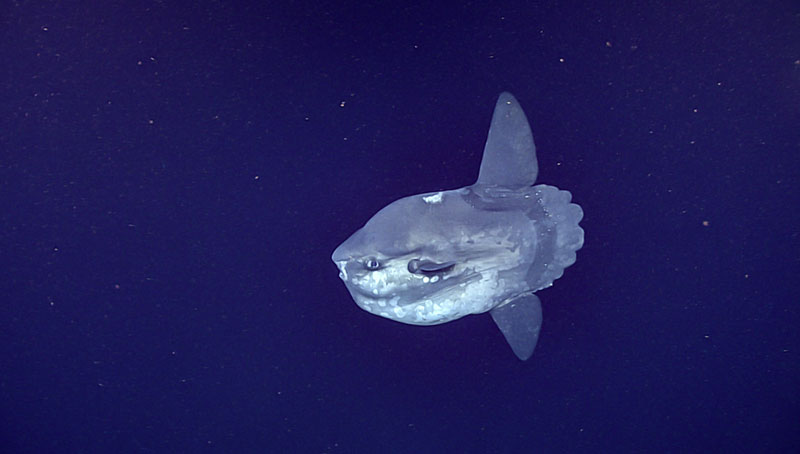
A visit from this ocean sunfish (Mola mola) was one of the highlights of Dive 10 of the 2019 Southeastern U.S. Deep-sea Exploration for the scientists and our followers on social media. Watch video of the fish swimming by. Image courtesy of the NOAA Office of Ocean Exploration and Research, 2019 Southeastern U.S. Deep-sea Exploration. Download larger version (jpg, 983 KB).
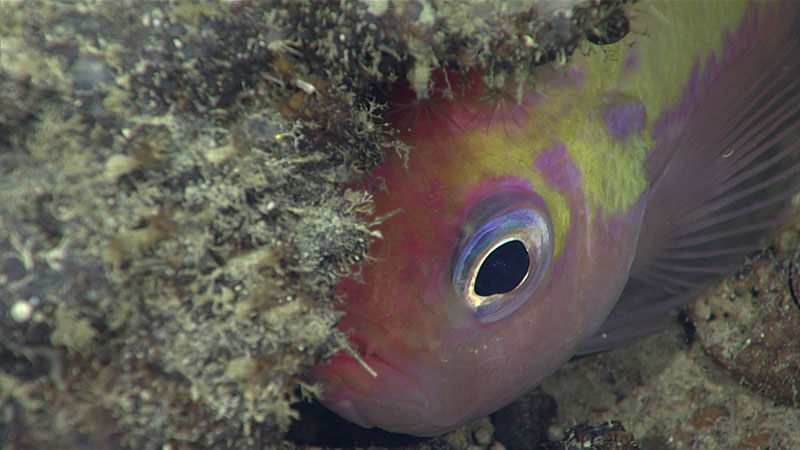
This colorful swallowtail bass (Anthias woodsi) was observed on Dive 10 of the 2019 Southeastern U.S. Deep-sea Exploration. Image courtesy of the NOAA Office of Ocean Exploration and Research, 2019 Southeastern U.S. Deep-sea Exploration. Download larger version (jpg, 757 KB).
While this may sound like a lot, it was nothing compared to what awaited us at the top. These terrace-like plateaus were dominated by the same encrusted eroding limestone. Overhangs created by erosion contained life on top surfaces as well as underneath. Among the diverse and abundant marine life we observed here were bubblegum coral, pom-pom anemones, corallimorphs, black corals, cup corals, a variety of glass sponges and demosponges, brisingid sea stars, spider crabs, hermit crabs, a swimming crab enjoying a meal, a sand tiger shark, swallowtail bass, dragonets, and a few large commercial wreckfish.
Most dives have highlights. This one had many. Two of these highlights were the abundance of basket stars (we saw 10) and an ocean sunfish, both of which were seen for the first time during this expedition on this dive.
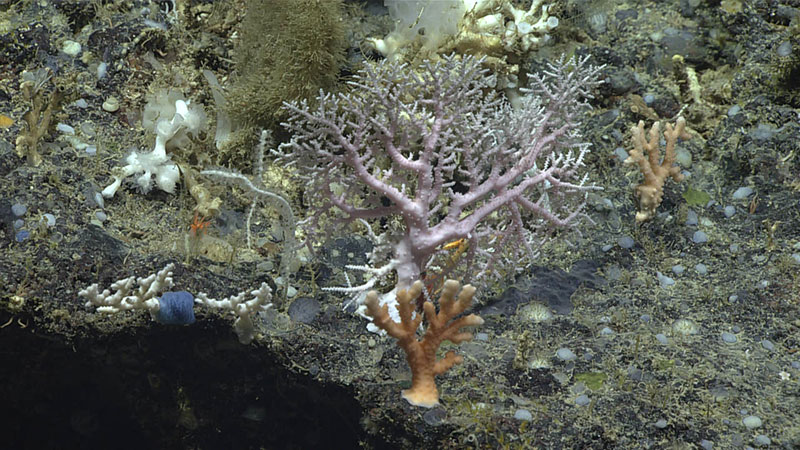
A number of different sponges and corals were seen thriving and living in harmony on this ledge explored during Dive 10 of the 2019 Southeastern U.S. Deep-sea Exploration. Image courtesy of the NOAA Office of Ocean Exploration and Research, 2019 Southeastern U.S. Deep-sea Exploration. Download larger version (jpg, 1.1 MB).
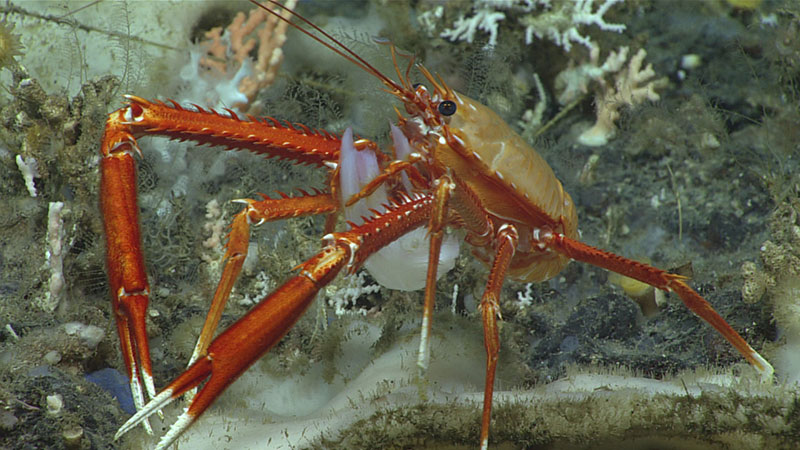
This painted yeti squat lobster (Eumunida picta) was observed carrying off a piece of glass sponge during Dive 10 of the 2019 Southeastern U.S. Deep-sea Exploration. Was it dinner, home decor, a gift? Your guess is as good as ours. Image courtesy of the NOAA Office of Ocean Exploration and Research, 2019 Southeastern U.S. Deep-sea Exploration. Download larger version (jpg, 970 KB).
While we began the dive in the HAPC, and most of it took place there, we ended it outside of the protected area. The only notable difference was an increase in fishing-related debris outside the HAPC, although fishing line was prevalent throughout the dive, often wrapped around gorgonians, lace corals, and other immobile (sessile) animals.
It was another great day for sponge collecting. Today we sampled three glass sponges, another Aphrocallistes beatrix for the Atlantic Seafloor Partnership for Integrated Research and Exploration (ASPIRE) and two others that may be new species.
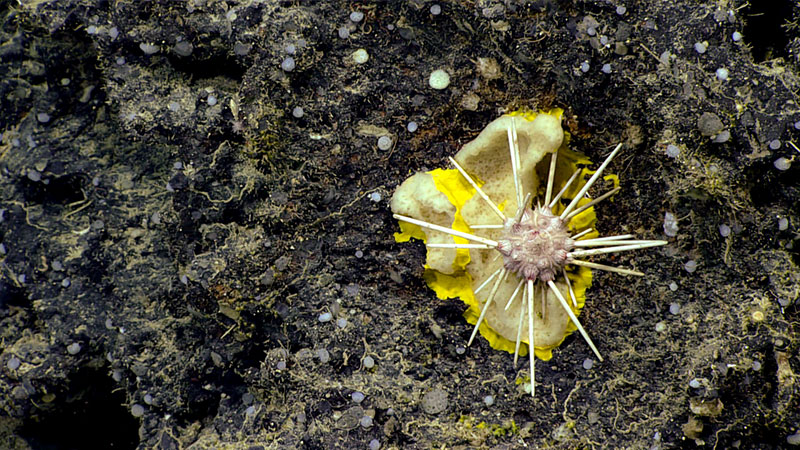
Among a number of unexpected sights during Dive 10 of the 2019 Southeastern U.S. Deep-sea Exploration was this pencil sea urchin on top of a glass sponge on top of a demosponge (Verongiida). Image courtesy of the NOAA Office of Ocean Exploration and Research, 2019 Southeastern U.S. Deep-sea Exploration. Download larger version (jpg, 1.9 MB).
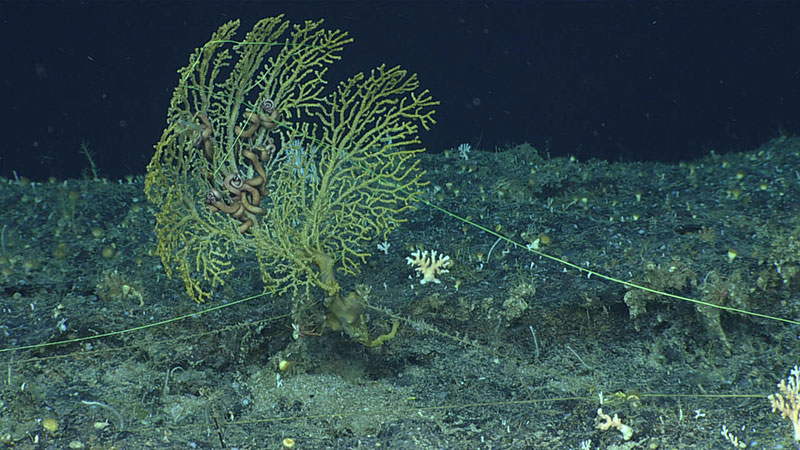
Fishing line, both old and new, as seen entangled on this fan coral, was prevalent throughout Dive 10 of the 2019 Southeastern U.S. Deep-sea Exploration. Image courtesy of the NOAA Office of Ocean Exploration and Research, 2019 Southeastern U.S. Deep-sea Exploration. Download larger version (jpg, 1.1 MB).

Location of Dive 10 of the 2019 Southeastern U.S. Deep-sea Exploration on November 17, 2019. Download larger version (jpg, 1.8 MB).
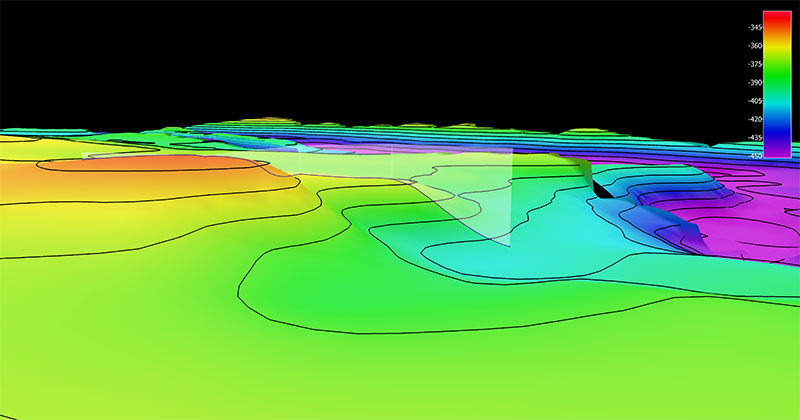
The remotely operated vehicle track for Dive 10 of the 2019 Southeastern U.S. Deep-sea Exploration, shown as a blue line with a white curtain. Legend shows water depth in meters. Download larger version (jpg, 2.3 MB).